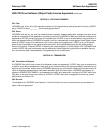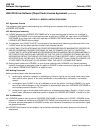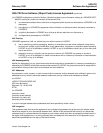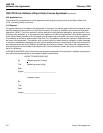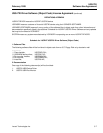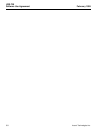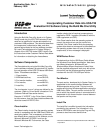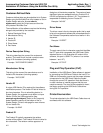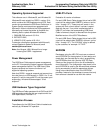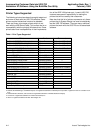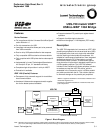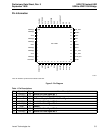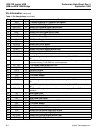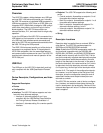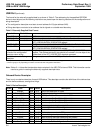
Application Note, Rev. 1 Incorporating Customer Data into USS-720
February 1999 Evaluation Kit Software Using the Build Me One Utility
Lucent Technologies Inc. 4-3
Operating Systems Supported
This software runs in
Windows
95, and
Windows
98.
Windows
95 must actually be OSR2.1 version 1214,
which contains the USB supplement and QFE. Each
vendor who purchases the USB Smart Cable from In-
System Design must execute an agreement with
Microsoft
in order to distribute the USB supplement.
Microsoft
may license the vendor to distribute the
following files to update
Windows
95 software:
1. OEMUSB.EXE version 4.03.1214,
2. DETROITR.EXE,
3. USBUPD1.EXE version 4.03.1214.
To execute a distribution agreement with
Microsoft
,
contact Stephanie Selden at
Microsoft
, email
sselden@microsoft.com.
Note: As of August 1998,
Microsoft
is no longer
licensing the OSR2.1 supplement.
Power Management
The USB Smart Cable supports power management
on the PC if its operating system supports the specific
power management feature. The USB Smart Cable
supports suspend and resume functions in all
supported operating systems.
Note that OSR2.1 supports suspend and resume func-
tions but there is no USB support in OSR2.1 for “0 volt
suspend” in which case some PCs cut the power upon
suspending.
Windows
98 does support “0 volt
suspend.”
USB Hardware Types Supported
The USB Smart Cable operates with all OHCI and UHCI
USB controllers and hubs that are compliant with the
USB Specification, Revision 1.0.
Installation Process
The software for the USB Smart Cable is loaded auto-
matically by
Windows
PnP operation.
USBLPTx Ports
Evaluation kit version of software:
For each USB Smart Cable plugged into a host’s USB,
a port will be added called USBLPTx (where x can be
from 1 through 127). These ports will remain in the
system with their current status if a printer is associ-
ated with the port. If no printer is associated with a
USBLPT port when the corresponding USB Smart
Cable is removed, the port is removed from the system.
Modified version of the USS-720 software:
For each USB Smart Cable plugged into a host’s USB,
a port will be added called XXXXXXx (where x can be
from 1 through 127). The “XXXXXX” string is defined
by the customer, for example: “LPTXYZ”.
EEPROM
Developers using the USS-720 must use an external
serial EEPROM (or the equivalent) in their design and
create their own hex data file for use in programming
the EEPROM at their site. See the USS-720 Data
Sheet and the glucent.zip file on the kit’s diskette for
more information. The configuration data stored in this
serial EEPROM is used by the
Microsoft
host software
during enumeration to load the appropriate drivers.
Using unique identification data in the EEPROM
provides a means for the developer to ensure that only
their software is loaded for use with their device.



